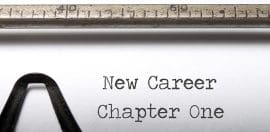Workplace Diversity and Inclusion is ‘Vital’ in 2017

13 January 2017 at 4:07 pm
Diversity and inclusion is set to be a “vital business tool” in 2017, according to Diversity Council Australia which has outlined a number of “D and I challenges” for the year.
The not-for-profit workplace diversity advisor encouraged organisations to “stay the course” and move away from conversations regarding “political correctness”.
According to DCA CEO Lisa Annese, it is important to recognise the issue is not about being “PC” but simply about workplace “respect and dignity and being polite”.
“The past year or so has been good for Australian businesses working on D and I,” Annese said.
“There has been an increase in ASX-listed companies of all sizes adopting a diversity policy, and the Workplace Gender Equality Agency reports some improvements in employer action on gender equality plus more organisations are qualifying as employers of choice for women.
“Many are introducing innovative programs, setting targets and identifying senior leaders to champion change.
“Unfortunately, [last] year saw the term ‘political correctness’ make a comeback as an insult pointed at those who were trying to drive positive change. Deriding efforts at D and I by labelling it ‘PC’ flies in the face of all the evidence that it is actually about delivering business benefits.”
Annese said the benefits of diverse and inclusive workplaces were well known.
“There is a large body of research showing that diverse and inclusive workplaces deliver improved productivity and profitability, greater creativity and innovation, higher employee well-being and engagement and reduced employee turnover, to name just a few,” she said.
“The business sector in Australia has moved way beyond debate about D and I and is getting on with the job.”
However Annese said businesses still had work to do in key areas:
- Women are still underrepresented when it comes to positions of leadership and the gender pay gap remains stubbornly high with sex discrimination the single largest contributing factor.
- The workforce participation of people with disability is around 30 per cent lower than for other Australians while the gap is 20 per cent for Aboriginal and Torres Strait Islander people.
- People with culturally diverse backgrounds are still significantly underrepresented in leadership in Australian organisations.
- Discrimination and harassment at work is still a problem. During pregnancy, parental leave or on return to work, half of mothers report discrimination, many LGBTIQ people experience widespread bullying, harassment or violence and are unable to be themselves at work, and over a quarter of mature-age people also report discrimination.
Annese said a continued commitment to diversity and inclusion by Australian businesses would make a difference.
“Organisational commitment to D and I should not be derailed by uninformed commentary as the evidence continues to show it is good for business,” she said.
“Robust strategies with measurable objectives and clear accountabilities are still the best way to create more diverse workplaces.
“But it’s also important to focus on inclusion as this will enable you to harness all of the benefits of that diversity.”
DCA highlighted some D and I challenges for business in 2017:
- Stay the course: Organisations’ commitment to D and I should be maintained and expanded as the evidence continues to show it is good for business.
- Focus on diversity and inclusion. Diversity refers to the mix of people in your organisation. Inclusion occurs when a diversity of people (ie from different ages, gender, cultural background etc.) can contribute their talents, skills and energies to the organisation. Improved performance and wellbeing of organisations, teams and individuals requires both. And inclusive leadership capabilities are critical in this.
- Aim for outcomes, not just activity. Policies and programs are a good start but they have to lead to better outcomes. Measurable objectives work, especially when they are transparent and where they hold individual’s accountable for achieving them.
- Consider intersectionality: People are not one-dimensional and considering all elements of identity can signal that different approaches are sometimes required.
- Look at gender and beyond. Organisations consistently rate gender as a high diversity priority but neglecting other diversity dimensions will mean you will miss out on talents and opportunities.







